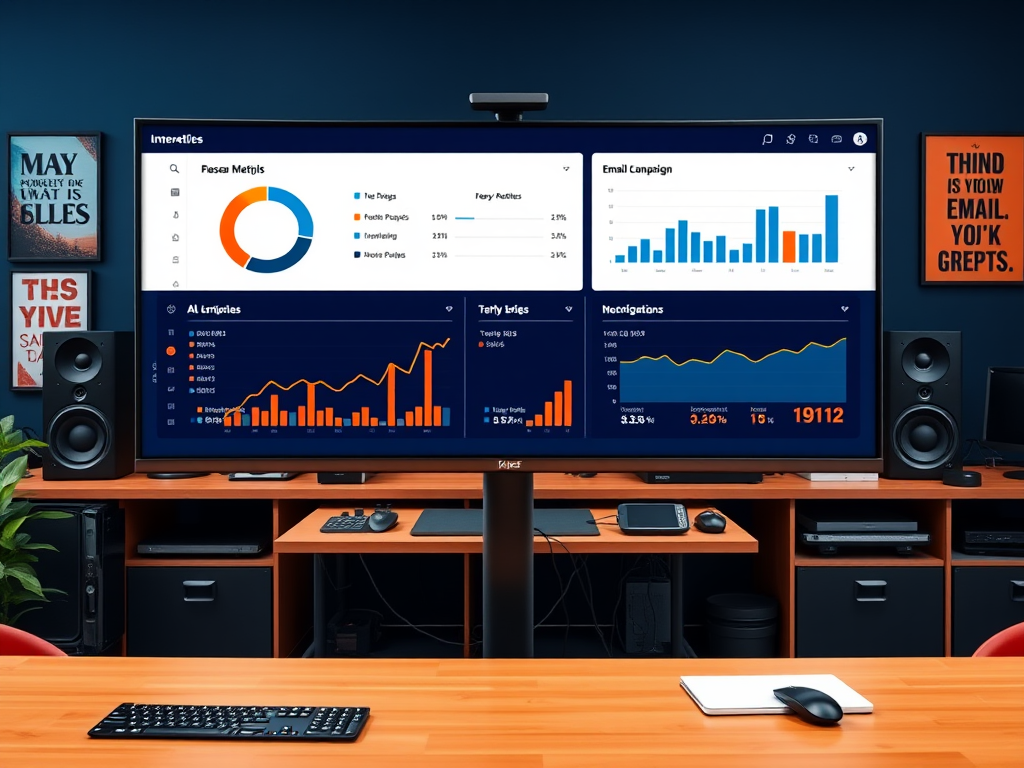In the competitive landscape of B2B marketing, the significance of effective email marketing cannot be underestimated. Businesses are continually searching for ways to optimize their outreach while ensuring meaningful connections with prospective clients. The art of B2B email marketing lies not only in delivering messages but in crafting strategies that resonate with corporate audiences at various stages of the purchasing journey. From understanding the nuances of list building to executing data-driven campaigns, various elements come together to create successful interactions. This guide will explore proven B2B email marketing strategies that can enhance engagement and drive conversions, equipping you with the tools needed to navigate this dynamic field.
As we delve into these strategies, it’s essential to remember that B2B email marketing requires patience and understanding of the target audience. Each interaction must communicate value and align with the recipients’ professional objectives. The effectiveness of your campaigns will ultimately depend on the relevance of your content, the precision of your targeting, and the clarity of your call-to-action (CTA). By the end of this article, you’ll be armed with the insights needed to revitalize your email marketing initiatives and foster lasting business relationships.
Understanding the B2B Email Marketing Landscape

To embark on a successful B2B email marketing journey, grasping the unique aspects of the B2B landscape is essential. Unlike B2C transactions, B2B purchases often involve multiple stakeholders, longer decision-making processes, and a need for thorough research. This necessitates a tailored approach that caters to the complexities of business relationships. Effective B2B email marketing acknowledges these intricacies, prioritizing informative and strategic communication that aligns with decision-makers in mind.
Recognizing your audience is the foundation of any successful campaign. You must consider the various roles individuals play within their organizations, how they influence purchasing decisions, and the specific pain points they face. Establishing this understanding will allow you to create targeted messaging that resonates with each segment of your audience. This informed approach ultimately enhances engagement, building trust and authority in your brand.
Building a Targeted Email List

The cornerstone of any successful email marketing campaign is a well-curated email list. Quality should always trump quantity; an engaged audience who finds value in your communications is far more beneficial than a large, unresponsive list. Building a targeted email list involves drawing from a variety of sources and utilizing tools that facilitate meaningful connections. A strong email list is the bedrock upon which your campaigns can flourish, ensuring that your outreach efforts yield favorable results.
- Leverage LinkedIn: Utilize LinkedIn to connect with industry professionals. This platform is ripe with opportunities to establish connections, allowing you to encourage subscriptions organically.
- Webinars and Events: Hosting webinars or industry events creates an excellent opportunity to capture leads. Make registration a requirement and collect email addresses for future outreach.
- Lead Magnets: Develop high-quality lead magnets, such as e-books or whitepapers. These valuable resources should entice your target audience to share their email addresses in exchange for comprehensive insights.
Crafting Engaging Content
Once a robust email list is in place, the next critical step is creating compelling content that engages your audience. B2B audiences often seek value-driven information that addresses their specific challenges and requirements. By delivering high-quality content, you can not only capture attention but also foster long-lasting relationships with your subscribers. The ultimate goal is to position yourself as a trusted resource and authority in your field.
In order to elevate engagement levels, personalization proves to be an invaluable strategy. This involves segmenting your audience and tailoring your content based on their preferences or pain points, ensuring that each communication feels bespoke. Adding dynamic content features allows for automatic personalization, enriching the user experience significantly. Furthermore, relevant subject lines and captivating introductions can effectively boost open rates, leading to increased engagement.
| Design Element | Description |
|---|---|
| Responsive Design | Emails must be viewable on all devices, providing a seamless experience for users whether they are on mobile or desktop. |
| Clear Call-to-Action (CTA) | CTAs should be prominent and straightforward, guiding the recipient towards the desired action effectively. |
Timing and Frequency of Campaigns
The timing and frequency of your email campaigns play a pivotal role in achieving high engagement rates. Understanding when your audience is most active and responsive helps in maximizing the effectiveness of your outreach. One approach is to deploy A/B testing, which allows you to assess various send times and days to determine optimal engagement periods. With enough data, you can refine your strategy to align with your audience’s preferences.
Consistency is key; establishing a regular schedule makes it easier for your subscribers to anticipate your emails, which can help with engagement rates. However, overloading your audience with constant messages may lead to fatigue and increased unsubscribe rates. Striking the right balance is critical for maintaining a healthy email list and building brand loyalty over time. This thoughtful approach ensures that your communications are welcome rather than seen as an annoyance.
Measuring Success Through Analytics
Finally, tracking performance through analytics is integral for refining your email marketing strategies. Measuring key metrics gives you insights into how well your campaigns are performing and indicates areas that may require adjustment. This data-oriented approach enables you to be proactive in enhancing your strategies, fostering continuous improvement over time.
- Open Rates: This indicates the effectiveness of your subject lines and how many recipients are taking an interest in your content.
- Click-Through Rates (CTR): CTR reveals how engaging your content is, and whether your CTAs are enticing enough for users to take action.
- Conversion Rates: Ultimately, this metric will determine the success of your email campaigns concerning the leads generated or sales made.
Conclusion
Implementing these effective strategies for B2B email marketing can significantly enhance your outreach efforts, build stronger relationships, and ultimately lead to increased conversions. By focusing on list building, crafting engaging content, optimizing design, considering timing, and measuring your success through analytics, you can create impactful email marketing campaigns that resonate with your audience. It is essential to remember that every campaign should deliver value, anticipate audience needs, and evolve based on performance metrics.
Frequently Asked Questions
- What is B2B email marketing? B2B email marketing involves sending emails to businesses with the aim of fostering relationships, promoting products or services, and generating leads.
- How often should I send B2B emails? Frequency depends on your audience and campaign goals, but maintaining a consistent schedule is essential to avoid overwhelming subscribers.
- What are the best ways to personalize B2B emails? Utilizing segmentation, dynamic content, and addressing the recipient by name are effective ways to personalize emails.
- Which metrics should I focus on for email campaign success? Focus on open rates, click-through rates, and conversion rates to gauge the effectiveness of your campaigns comprehensively.
- Should I use images in B2B emails? Yes, images can enhance engagement, but ensure they do not outweigh the message and that they are optimized for quick loading.




